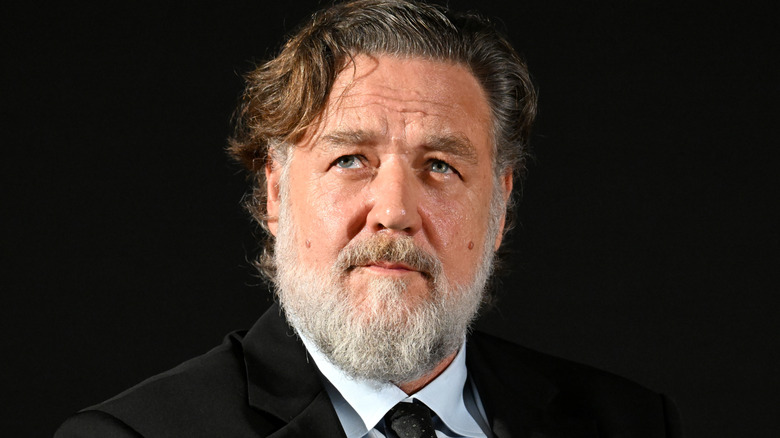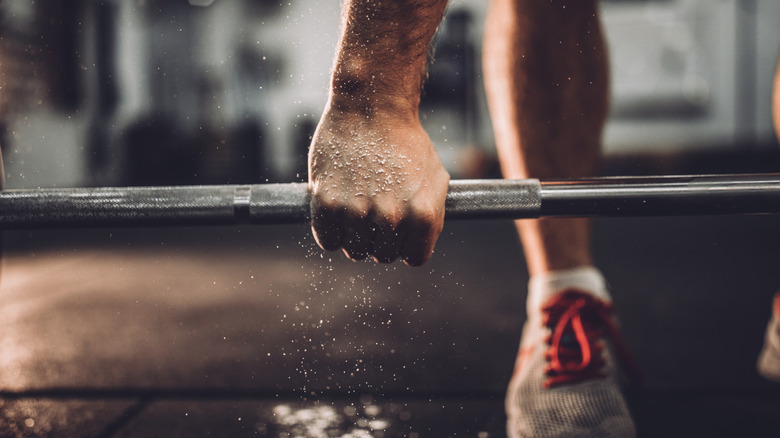Inside Russell Crowe's Weight Loss Journey
Stars may sometimes seem like they live in worlds that are far different from what their fans experience. However, they still grapple with everyday, relatable concerns like gaining unwanted pounds.
In November 2025, Russell Crowe spoke candidly with podcaster (and avid carnivore diet follower) Joe Rogan about what it took to shed 55 pounds (via Today). The 61-year-old actor explained during the interview with Rogan that after topping out at 277 pounds, he slimmed down to 222 pounds. And while his weight reduction methods aren't unusual or shocking, they serve as reminders that even small (but intentional) changes can make big differences in the numbers on your doctor's scale. (Read about some dramatic celebrity weight-loss transformations.)
For one, Crowe mentioned that he worked out (per Men's Health). His exercises of choice include cardio and strength training, along with an appropriate nutritional regimen based on personalized insights he received through a wellness app.
Russell Crowe's gradual fitness journey
It's hardly surprising that Crowe would drop weight after increasing his exercise: Engaging in strength training and cardio regularly can cause you to burn more calories. Put simply by personal trainer Oscar Colon (via CNET), cardio supports the cardiovascular system, and weight lifting ups your energy expenditure in a couple of ways: "Strength training has a two-pronged effect because you burn calories during the workout and during the recovery and restoration of the muscle groups you worked."
As long as you stay in a calorie deficit, your body will become slimmer over time. That said, Crowe didn't just immediately start exercising: First, he had to overcome obstacles to putting fitness first because of some underlying medical concerns.
Crowe noted that he had some joint problems due to arthritis and past injuries that made moving uncomfortable. This isn't unusual, although physiatrist Dr. James Wyss told the Arthritis Foundation that it's possible to make workouts feel better for those with inflammation. "Anyone experiencing increased pain and inflammation should avoid high-intensity activities that involve running or twisting," he said. "[We] would recommend low-impact exercise, such as walking or swimming." Crowe received treatments to reduce his pain and enable him to improve his health.
A slow and steady course for better health outcomes
In addition to working out, Crowe shared that he made a diet-related decision to curb his use of alcohol, although he was a big believer in "having a drink." Still, he said he recognized that as he aged, he couldn't handle drinking too much alcohol, and found it was better to have wine on occasion but in moderation.
Crowe's choice to cut out most alcohol to get fitter through weight loss works. Alcohol contains "empty" calories, so overconsumption can severely affect a person's fitness goals. But as a 2015 review in Current Obesity Reports explains, the answer to combating obesity due to alcohol intake may be moderation. Therefore, Crowe seems to be moving in the right direction in terms of cutting back.
Another best practice that Crowe has relied upon during his weight loss journey was to take it slowly. Rather than try to see fast results, he said he was trying to avoid burnout by not trying to make abrupt and difficult-to-sustain behavioral changes.
This isn't the first time Crowe's weight has earned him press. In the late 2000s, he gained 63 pounds for a role by (at least in part) reportedly eating cheeseburgers for breakfast.


